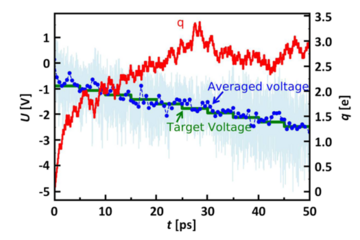All genres
1.
Journal Article
A Python Library for Pre- and Post-Processing of DAMASK Simulations. Journal of Open Research Software 10 (105), 7164 (2025)
2.
Journal Article
DAMASK – The Düsseldorf Advanced Material Simulation Kit for modeling multi-physics crystal plasticity, thermal, and damage phenomena from the single crystal up to the component scale. Computational Materials Science 158, pp. 420 - 478 (2019)
3.
Journal Article
Subsurface Grain Morphology Reconstruction by Differential Aperture X-ray Microscopy. JOM-Journal of the Minerals Metals & Materials Society 69 (6), pp. 1100 - 1105 (2017)
4.
Journal Article
A Flexible and Efficient Output File Format for Grain-Scale Multiphysics Simulations. Integrating Materials and Manufacturing Innovation 6 (1), pp. 83 - 91 (2017)
5.
Journal Article
Quantifying deformation processes near grain boundaries in α titanium using nanoindentation and crystal plasticity modeling. International Journal of Plasticity 86, pp. 170 - 186 (2016)
6.
Journal Article
From insect scales to sensor design: modelling the mechanochromic properties of bicontinuous cubic structures. Bioinspiration & Biomimetics 11 (4), 045001 (2016)
7.
Journal Article
Neighborhood influences on stress and strain partitioning in dual-phase microstructures. An investigation on synthetic polycrystals with a robust spectral-based numerical method. Meccanica 51 (2), pp. 429 - 441 (2016)
8.
Journal Article
Crystal plasticity study of monocrystalline stochastic honeycombs under in-plane compression. Acta Materialia 103, pp. 796 - 808 (2016)
9.
Journal Article
Analytical bounds of in-plane Young’s modulus and full-field simulations of two-dimensional monocrystalline stochastic honeycomb structures. Computational Materials Science 109, pp. 323 - 329 (2015)
10.
Journal Article
Synergy of atom-probe structural data and quantum-mechanical calculations in a theory-guided design of extreme-stiffness superlattices containing metastable phases. New Journal of Physics 17 (9), 093004 (2015)
11.
Journal Article
Multiscale deep drawing analysis of dual-phase steels using grain cluster-based RGC scheme. Modelling and Simulation in Materials Science and Engineering 23 (4), 045005 (2015)
12.
Journal Article
Numerically robust spectral methods for crystal plasticity simulations of heterogeneous materials. International Journal of Plasticity 66, pp. 31 - 45 (2015)
13.
Journal Article
Grain boundaries and interfaces in slip transfer. Current Opinion in Solid State and Materials Science 18 (4), pp. 212 - 226 (2014)
14.
Journal Article
Dislocation density distribution around an indent in single-crystalline nickel: Comparing nonlocal crystal plasticity finite-element predictions with experiments. Acta Materialia 71, pp. 333 - 348 (2014)
15.
Journal Article
Effect of grain refinement by ECAP on creep of pure Cu. Materials Science and Engineering A: Structural Materials Properties Microstructure and Processing 590, pp. 423 - 432 (2014)
16.
Journal Article
A spectral method solution to crystal elasto-viscoplasticity at finite strains. International Journal of Plasticity 46, pp. 37 - 53 (2013)
17.
Journal Article
Simulation of shear banding in heterophase co-deformation: Example of plane strain compressed Cu–Ag and Cu–Nb metal matrix composites. Acta Materialia 61 (12), pp. 4591 - 4606 (2013)
18.
Journal Article
Revealing the strain-hardening behavior of twinning-induced plasticity steels: Theory, simulations, experiments. Acta Materialia 61 (2), pp. 494 - 510 (2013)
19.
Journal Article
Study of {1121} Twinning in alpha-Ti by EBSD and Laue Microdiffraction. Metallurgical and Materials Transactions A 44 (8), pp. 3664 - 3674 (2013)
20.
Journal Article
Non-crystallographic shear banding in crystal plasticity FEM simulations: Example of texture evolution in α-brass. Acta Materialia 60 (3), pp. 1099 - 1115 (2012)











